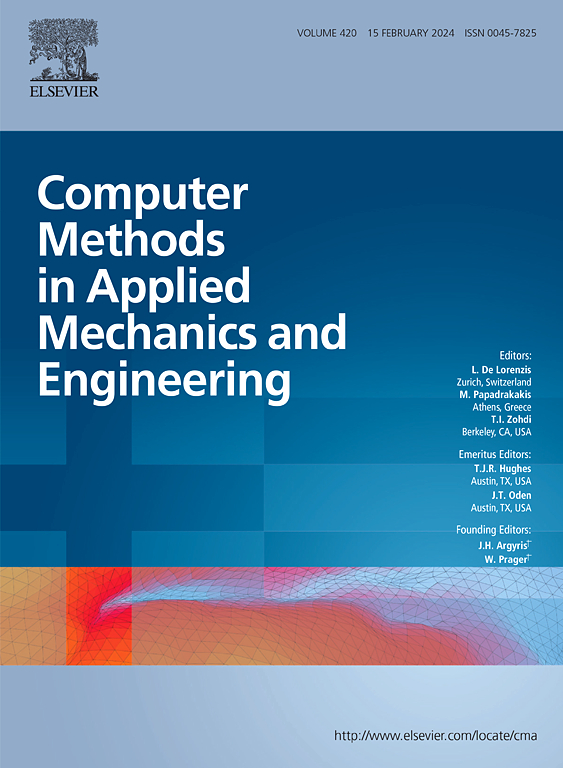Kolmogorov–Arnold PointNet: Deep learning for prediction of fluid fields on irregular geometries
IF 6.9
1区 工程技术
Q1 ENGINEERING, MULTIDISCIPLINARY
Computer Methods in Applied Mechanics and Engineering
Pub Date : 2025-03-11
DOI:10.1016/j.cma.2025.117888
引用次数: 0
Abstract
Kolmogorov–Arnold Networks (KANs) have emerged as a promising alternative to traditional Multilayer Perceptrons (MLPs) in deep learning. KANs have already been integrated into various architectures, such as convolutional neural networks, graph neural networks, and transformers, and their potential has been assessed for predicting physical quantities. However, the combination of KANs with point-cloud-based neural networks (e.g., PointNet) for computational physics has not yet been explored. To address this, we present Kolmogorov–Arnold PointNet (KA-PointNet) as a novel supervised deep learning framework for the prediction of incompressible steady-state fluid flow fields in irregular domains, where the predicted fields are a function of the geometry of the domains. In KA-PointNet, we implement shared KANs in the segmentation branch of the PointNet architecture. We utilize Jacobi polynomials to construct shared KANs. As a benchmark test case, we consider incompressible laminar steady-state flow over a cylinder, where the geometry of its cross-section varies over the data set. We investigate the performance of Jacobi polynomials with different degrees as well as special cases of Jacobi polynomials such as Legendre polynomials, Chebyshev polynomials of the first and second kinds, and Gegenbauer polynomials, in terms of the computational cost of training and accuracy of prediction of the test set. Furthermore, we examine the robustness of KA-PointNet in the presence of noisy training data and missing points in the point clouds of the test set. Additionally, we compare the performance of PointNet with shared KANs (i.e., KA-PointNet) and PointNet with shared MLPs. It is observed that when the number of trainable parameters is approximately equal, PointNet with shared KANs (i.e., KA-PointNet) outperforms PointNet with shared MLPs. Moreover, KA-PointNet predicts the pressure and velocity distributions along the surface of cylinders more accurately, resulting in more precise computations of lift and drag.
求助全文
约1分钟内获得全文
求助全文
来源期刊
CiteScore
12.70
自引率
15.30%
发文量
719
审稿时长
44 days
期刊介绍:
Computer Methods in Applied Mechanics and Engineering stands as a cornerstone in the realm of computational science and engineering. With a history spanning over five decades, the journal has been a key platform for disseminating papers on advanced mathematical modeling and numerical solutions. Interdisciplinary in nature, these contributions encompass mechanics, mathematics, computer science, and various scientific disciplines. The journal welcomes a broad range of computational methods addressing the simulation, analysis, and design of complex physical problems, making it a vital resource for researchers in the field.

 求助内容:
求助内容: 应助结果提醒方式:
应助结果提醒方式:


